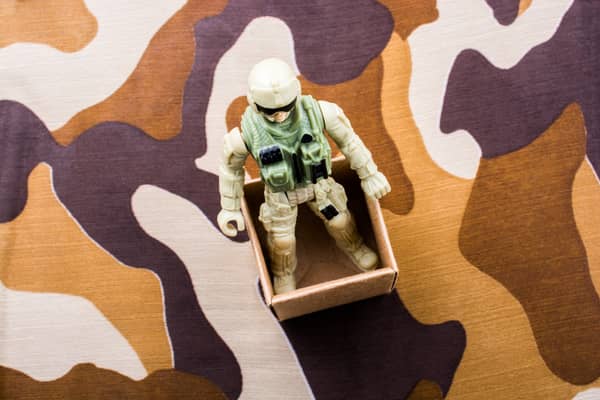Why does Jack paint his face in Lord of the Flies? Jack paints his face like a mask to act as camouflage so the pigs cannot see him when he is hunting. However, it isn’t just about practicality for Jack. The mask gives him a new identity and allows him to separate from the rules of society.
Why does Jack paint his face in Lord of the Flies? (Answer)
Throughout the novel, Jack struggles with his desire for power and control. Painting his face not only helps him blend into his surroundings while hunting but also gives him a sense of anonymity that allows for more ruthless behavior. He can become someone else entirely – something more primal and instinctual.
The mask also represents Jack’s separation from societal norms and expectations. In their first meeting, Ralph notes that Jack’s choirboys wear black robes that make them look “like a tribe.” This use of tribal imagery foreshadows Jack’s eventual transformation into a savage leader who rejects civilization altogether.
As Jack becomes increasingly violent and domineering, wearing the mask becomes an integral part of his persona. He even insists on being called “Chief” by his followers – further emphasizing this new identity.
In essence, painting his face is an outward sign of Jack’s rejection of order and civility in favor of pure instinctual behavior. It represents his desire to break free from societal constraints and embrace a primal existence where he has complete control over himself and others.
Quotes showing why Jack paints his face (Cite these!)
Here are some citeable quotes from “Lord of the Flies” that showcase Jack’s use of face paint as camouflage and its role in separating him from society:
1. “He looked in astonishment, no longer at himself but at an awesome stranger. He spilt the water and leapt to his feet, laughing excitedly. Beside the pool his sinewy body held up a mask that drew their eyes and appalled them. He began to dance and his laughter became a bloodthirsty snarling” (Chapter 4).
This quote shows Jack’s excitement upon seeing his painted face for the first time. The mask allows him to separate from society as it gives him a new identity, which allows for more ruthless behavior.
2. “The mask was a thing on its own, behind which Jack hid, liberated from shame and self-consciousness” (Chapter 4).
This quote demonstrates that the mask serves as a type of shield or barrier between Jack’s true self and society’s expectations of him. It separates him from the rules of society by allowing him to behave without restraint.
3. “The mask compelled them… He began to dance again and suddenly he saw Piggy, a few yards away, dim-eyed, grinning foolishly, and holding out his arms to him” (Chapter 4).
This quote highlights how the mask has such an effect on those around Jack that it even compels them to join in with his wild behavior. It also shows how Piggy is not able to recognize Jack because of the paint which reinforces why he paints it on in order not be seen by pigs during hunting.
4. “He capered towards Bill who followed as if he had no mind of his own… The mask was a thing on its own, behind which Jack hid…” (Chapter 4).
This quote again emphasizes how the mask causes others around Jack to follow him blindly while also reinforcing that it is something completely separate from himself – almost like a different persona entirely.
5. “There was blackness within… darkness was poured into [Jack’s] mind… He looked in astonishment, no longer at himself but at an awesome stranger” (Chapter 4).
This quote shows how the mask allows Jack to escape his own consciousness and embrace a more primal, instinctual existence. It also emphasizes the separation between Jack’s true self and his painted persona.
Overall, these quotes demonstrate how the mask serves both as camouflage while hunting and as a tool for Jack to separate from society’s expectations and embrace a savage, instinctual way of life.
How does Jack painting his face change him?
Jack painting his face as camouflage to hide from the pigs while hunting changes him in several ways. Firstly, it alters his physical appearance, transforming him into a menacing and savage figure, instilling fear in others. This change in appearance also serves as a mask that allows Jack to shed his inhibitions and fully embrace his primal instincts. The face paint gives him a sense of anonymity and power, enabling him to detach himself from societal norms and engage in increasingly violent and brutal behavior without consequence. Ultimately, this transformation symbolizes Jack’s descent into savagery and marks a significant shift in his character throughout Lord of the Flies.
What does Jack’s mask symbolize in Lord of the Flies?
Jack’s mask in Lord of the Flies symbolizes his transformation into a savage and the abandonment of societal norms. It provides him with a new identity, allowing him to distance himself from the constraints and rules imposed by society. The mask becomes a powerful tool that enables Jack to unleash his primal instincts, leading to his descent into savagery and violence on the island.
What colors does Jack paint his face?
In Lord of the Flies, Jack paints his face with white, red, and black colors.
Conclusion
In conclusion, throughout Lord of the Flies, we see how painting one’s face can serve as camouflage while hunting but also represent something much deeper about one’s identity. This realization is particularly true in Jack’s case, given that he has rejected societal norms and embraced savagery.
